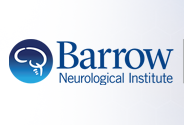High-frequency spinal cord stimulation causing cardiac paresthesias after lead migration: a case report
Document Type
Article
Abstract
INTRODUCTION: High-frequency (HF) spinal cord stimulation (SCS), a relatively new form of spinal cord stimulation, provides stimulation frequencies of up to 10 kHz and allows for paresthesia-free pain relief, an advantage that distinguishes it from traditional stimulation therapy. Without paresthesias, patients with HF SCS do not experience position-dependent painful stimulation and do not have to experience treatment interruption during sleep. Lead migration is a well-known complication of conventional spinal cord stimulation and usually results in a loss of efficacy along with other unpleasant sensory symptoms. In this case report, we present an incidence of lead migration in HF SCS that resulted in paresthesias, a symptom not expected to occur in this novel therapy. CASE: The patient, a 60-year-old female with post-laminectomy syndrome, underwent a trial of HF SCS with standard lead placement at T8-T9. She initially had pain relief, but returned to the office on post-operative day 2 complaining of left chest wall and cardiac paresthesias, without frank pain or palpitations, in addition to loss of efficacy for her back and leg pain. Imaging showed that the leads had migrated, with one lead reaching the levels of T1-T3. CONCLUSION: While HF SCS has emerged as an effective paresthesia-free means of reducing back and leg pain, we provide the first report of paresthesias occurring with the HF SCS system as a result of cephalad lead migration. As HF SCS is only now being utilized as a treatment modality, we must remain cautious of potential adverse outcomes in patients, in particular above T8.
Publication Date
11-1-2018
Publication Title
British journal of pain
ISSN
2049-4637
Volume
12
Issue
4
First Page
217
Last Page
219
PubMed ID
30349695
Digital Object Identifier (DOI)
10.1177/2049463718762970
Recommended Citation
Majmundar, Neil; Spinazzi, Eleonora Francesca; Doran, Joseph; and Mammis, Antonios, "High-frequency spinal cord stimulation causing cardiac paresthesias after lead migration: a case report" (2018). Neurosurgery. 2202.
https://scholar.barrowneuro.org/neurosurgery/2202


